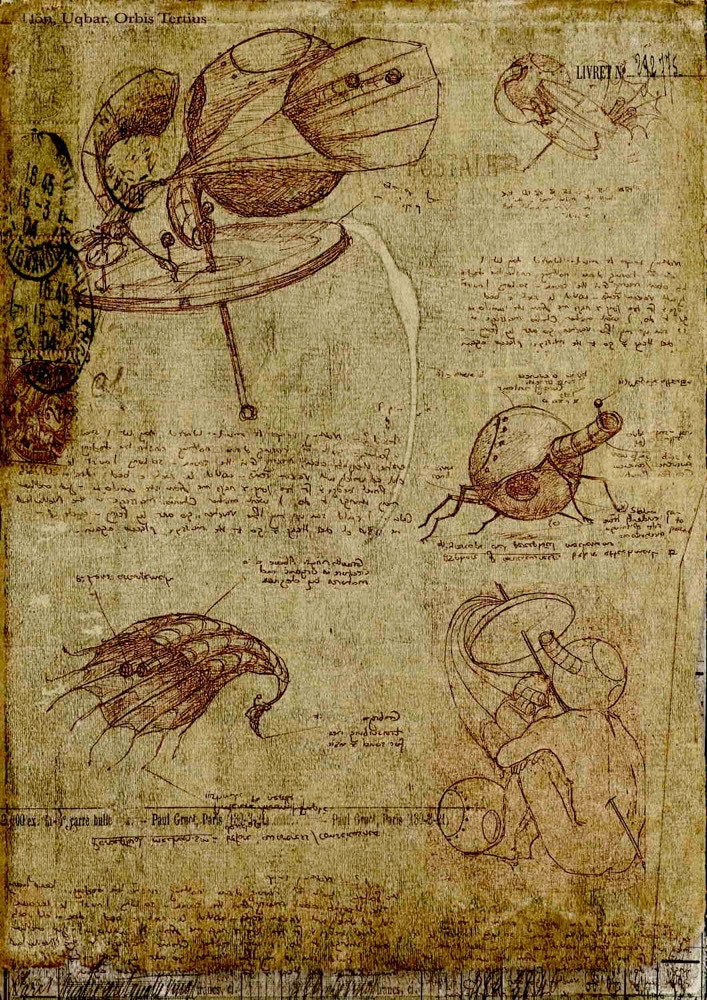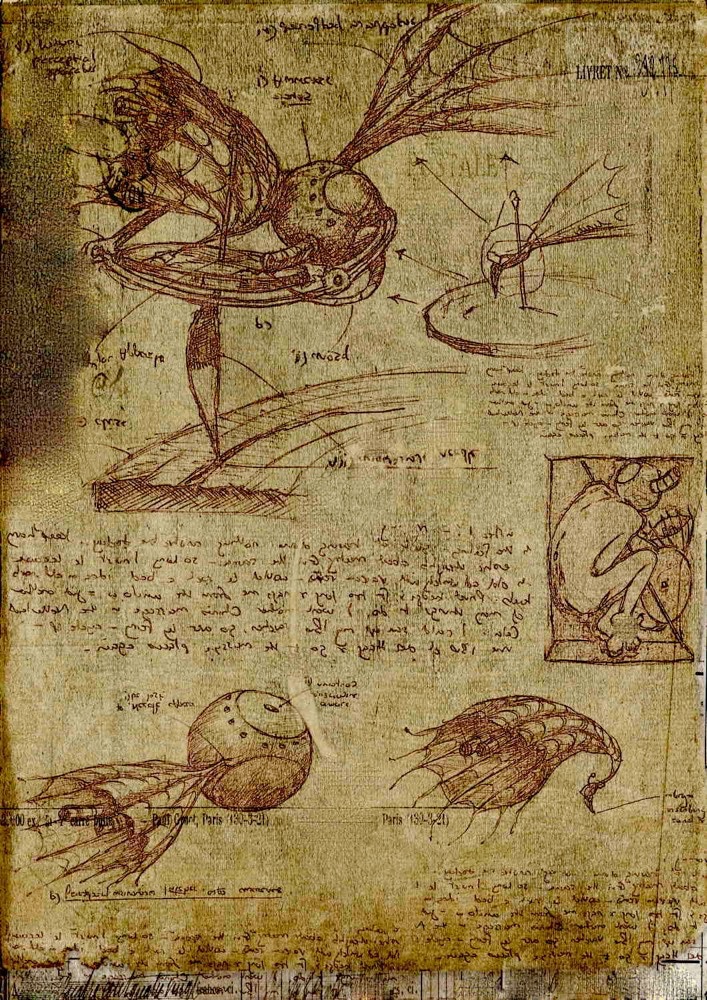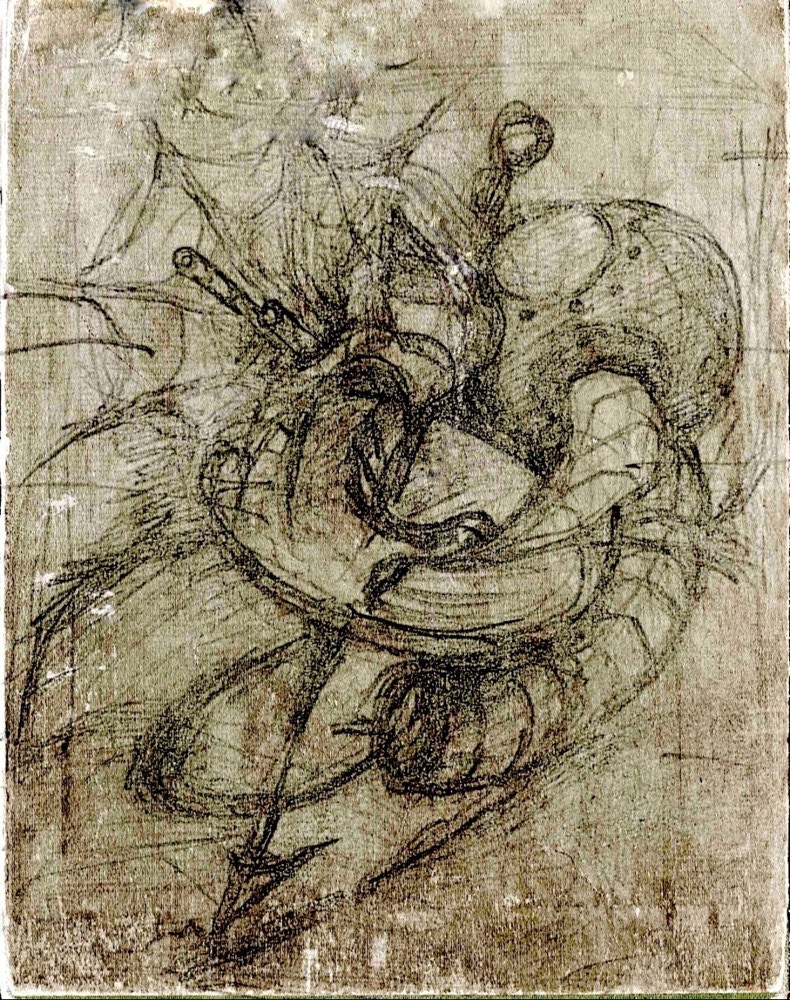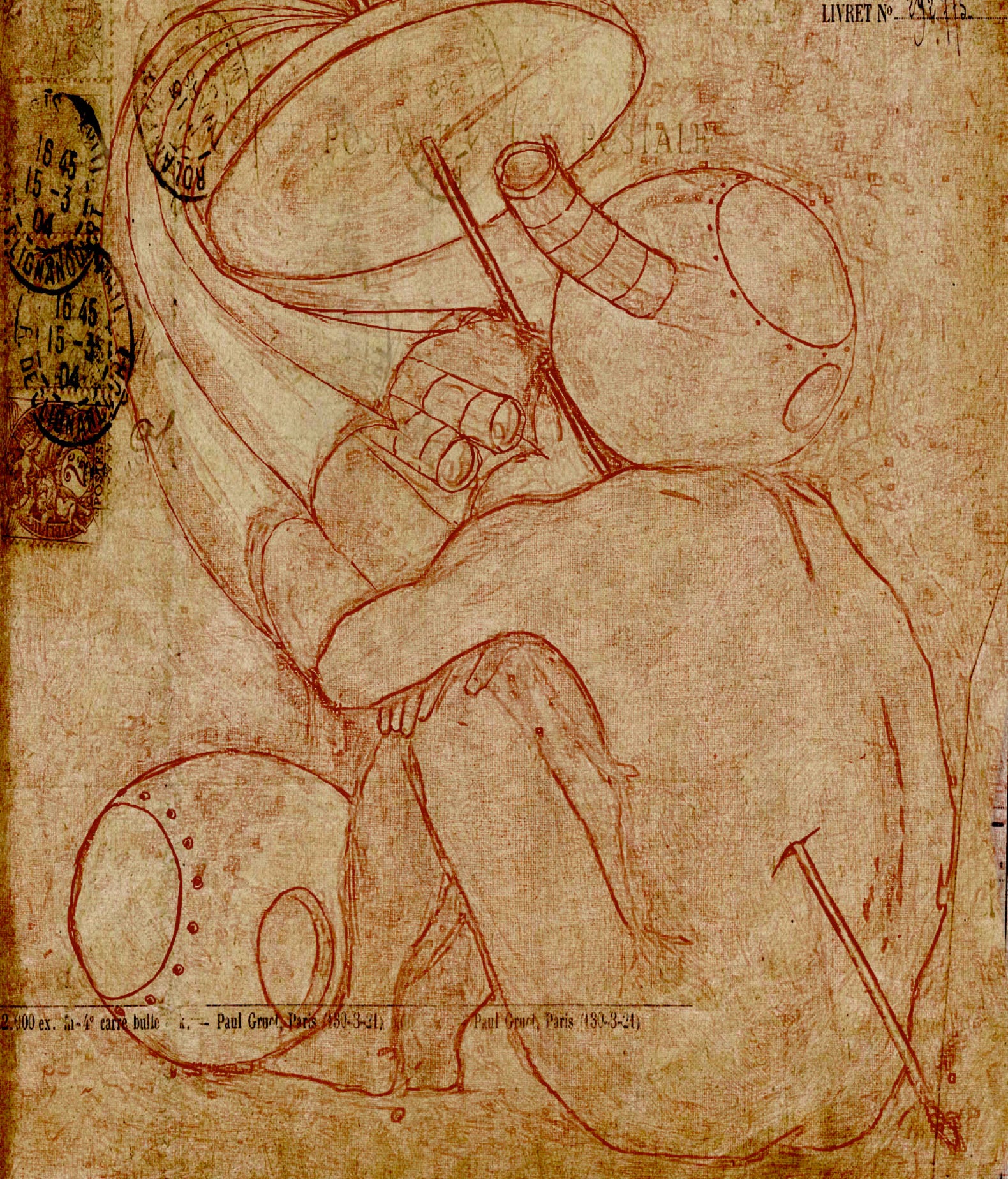The Tlön, Uqbar, Orbis Tertius Manuscript
“The meta-physicians of Tlön are not looking for truth, nor even for an approximation of it; they are after a kind of amazement.” Jorge Luis Borges.
The Tlön, Uqbar, Orbis Tertius manuscripts were unearthed in the basement of a café in Algiers in 1844 by an Italian archaeological team. They extensively documented their discovery and reported in the 1850 Proceedings of the Italian Antiquarian Society. Though the article did not interpret the coded writing or the cartoons, it speculated that the manuscript artist had attempted to design a sound recording apparatus. The funnel resembled ear-trumpets used by the hard-of-hearing, so this was a reasonable assumption. The manuscripts were acquired by the British Museum Document section, where the academic community attempted to make sense of them. An anonymous contributor to the Editorial section of the Philosophical Transactions of the Royal Society suggested that the plans expressed the Renaissance understanding of the ego. The academic community ridiculed the suggestion and the acrimonious debate entered the public domain. The British Museum responded to a rare public enthusiasm for antique manuscripts and exhibited the most legible parts. A newly formed Metaphysical Engineering Society commissioned lithographic reproductions of the manuscripts and distributed them to their members. Within months, they made plans to construct devices resembling those in the manuscripts.
Tlön, Uqbar, Orbis Tertius Plate 1
Tlön, Uqbar, Orbis Tertius Plate 2
Tlön, Uqbar, Orbis Tertius Plate 3
Tlön, Uqbar, Orbis Tertius Plate 4
Tlön, Uqbar, Orbis Tertius Plate 5
© Copyright 2021 Mark Peatfield


















